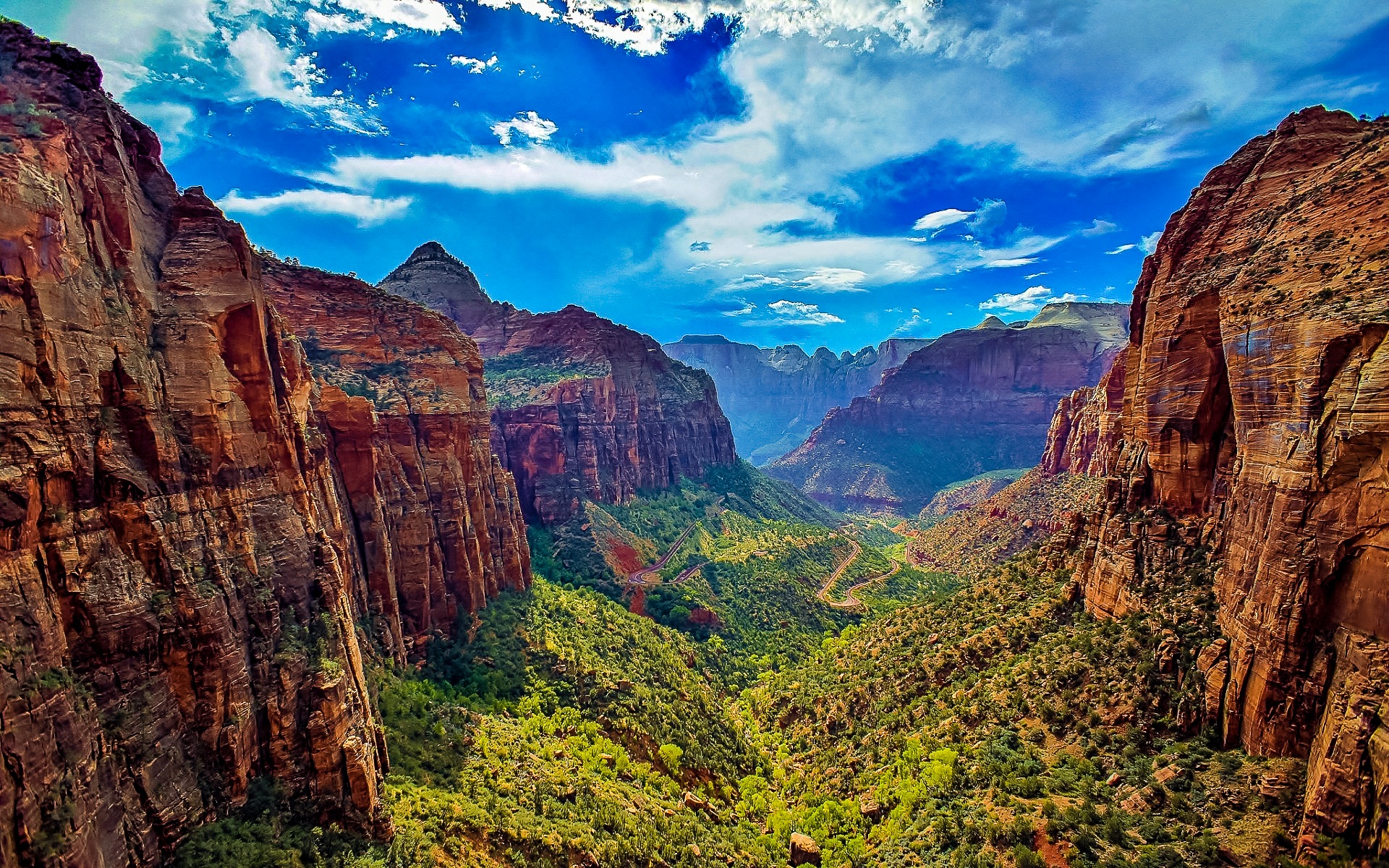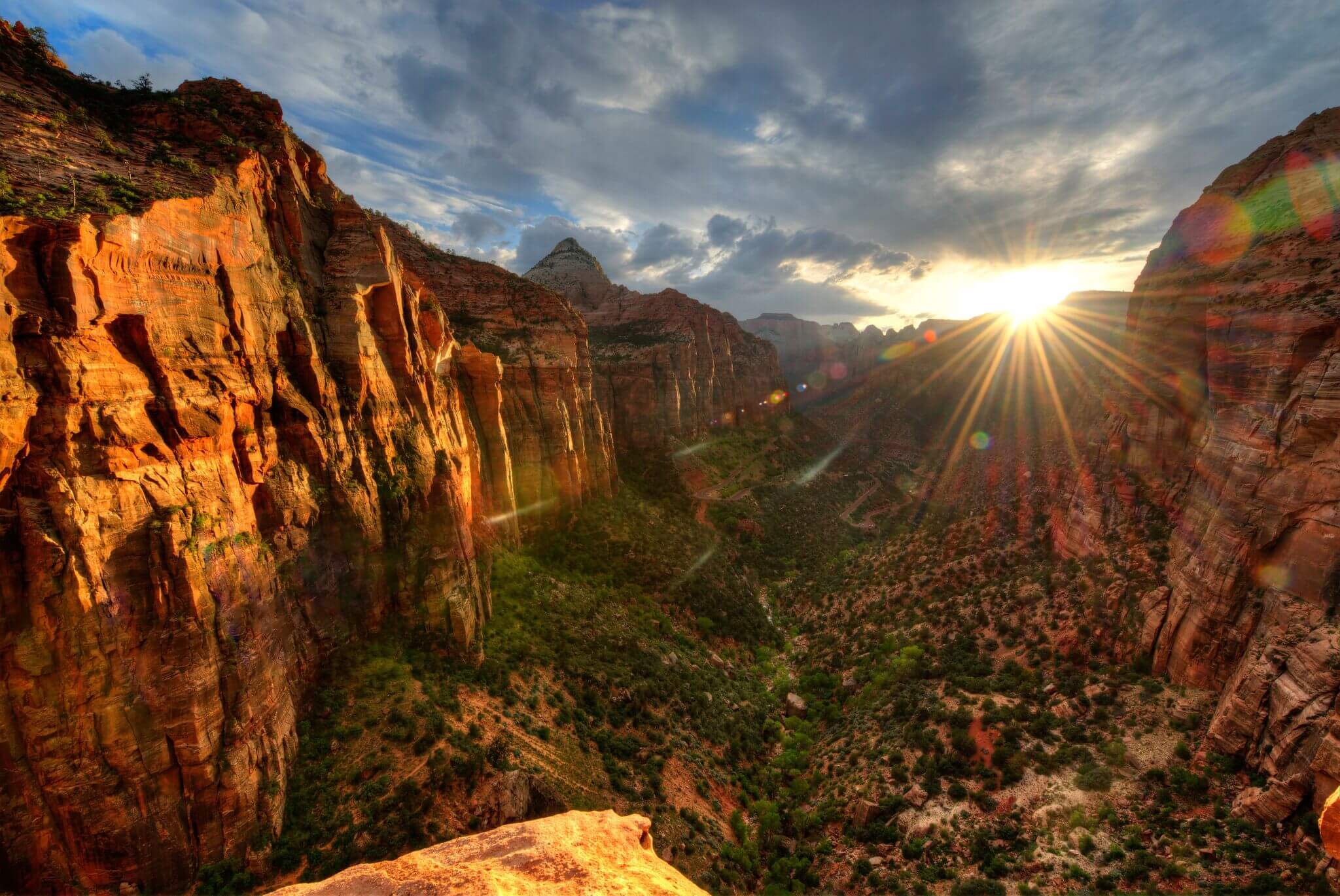
Echoes in Stone: The Legends Woven into America’s Zion
America is a nation born of stories. From the earliest indigenous tales of creation and spirit guardians to the rugged sagas of pioneers, the wild yarns of frontiersmen, and the eerie whispers of urban lore, legends are the very sinews of its identity. They are not merely historical footnotes but living narratives that shape our understanding of the land and its people, often blossoming in places of profound natural beauty and mystery. Nowhere is this more evident than in the colossal, spiritual landscape of Zion National Park, a place where the very stones seem to hum with ancient, untold sagas.
Zion, nestled in the southwestern corner of Utah, is more than just a national park; it is a geological masterpiece, a cathedral carved by wind and water over millennia. Its colossal sandstone cliffs, painted in hues of cream, pink, and crimson, soar skyward, framing a verdant river valley. The Virgin River, a persistent sculptor, has gouged out the park’s iconic slot canyons, including the famed Narrows, where walls rise thousands of feet above a slender ribbon of water. This breathtaking grandeur, coupled with its remote location, has made Zion a fertile ground for legends, a crucible where indigenous beliefs, pioneer struggles, and modern mysteries converge to form a rich, enduring tapestry of lore.
The fabric of American legends is as diverse as its landscapes. It encompasses the grand mythology of figures like Paul Bunyan, whose feats of strength shaped forests and rivers, and the quiet reverence for Johnny Appleseed, a gentle wanderer planting sustenance. It includes the spectral warnings of the Headless Horseman and the cryptid enigma of Bigfoot. But beneath these more widely known tales lie countless local legends, deeply rooted in specific places – places like Zion, where the sheer scale and beauty demand interpretation, where the human mind instinctively seeks to imbue the sublime with meaning.

Before it was called Zion, the Paiute people knew this land as Mukuntuweap, meaning "straight up country." For thousands of years, they thrived here, weaving their lives into the rhythm of the canyons and the Virgin River. Their legends speak of a deep spiritual connection to the land, of powerful animal spirits, and of Coyote, the trickster god, who often played a role in shaping the world around them. The towering cliffs were not just rock but the abodes of spirits, and the deep canyons held secrets and sacred places. To the Paiute, every feature of the landscape had a story, a purpose, a connection to the spiritual realm. The very act of living in such a dramatic environment naturally fostered a rich oral tradition, explaining the unexplainable, honoring the powerful, and transmitting cultural values.
Preceding the Paiute were the Ancestral Puebloans, or Anasazi, whose enigmatic presence is still felt in the silent ruins and ancient petroglyphs etched into Zion’s canyon walls. Their legends, though largely lost to time, undoubtedly centered on survival, connection to the cosmos, and the reverence for their ancestors. The mystery of their eventual disappearance from the region around 1300 CE itself forms a legend – did they vanish into the earth, migrate to another sacred land, or were they consumed by an unknown catastrophe? The petroglyphs, abstract and symbolic, serve as proto-legends, silent narratives left behind, inviting modern visitors to ponder the stories they once told.
It was into this ancient, sacred landscape that Mormon pioneers ventured in the mid-19th century. Driven by their faith and the promise of a new Zion – a promised land of refuge and spiritual purity – they encountered a landscape that both terrified and inspired them. Early settlers like Isaac Behunin, who established the first permanent white settlement in Zion Canyon in 1863, named the area "Zion," believing it to be a heavenly sanctuary. "A man can worship God in these mountains as well as in any cathedral," he reportedly said, encapsulating the profound spiritual experience the landscape offered.
The Mormon settlers, deeply religious and often facing immense hardship, interpreted the dramatic features of the canyon through the lens of their faith. This gave rise to many of the names we know today, each carrying a legendary weight. Angels Landing, a terrifyingly steep ascent, was named by Frederick Fisher in 1916, who declared that "only an angel could land on it." The Court of the Patriarchs – Abraham, Isaac, and Jacob – are colossal sandstone peaks, named by a Methodist minister, Frederick Vining Fisher, in 1916, evoking biblical grandeur and ancestral wisdom. These names are not arbitrary; they are legends in themselves, testaments to the pioneers’ awe, their struggle, and their fervent belief that this was indeed a sacred space, a physical manifestation of their spiritual aspirations. Stories circulated of divine intervention during floods or droughts, of unwavering faith guiding them through the wilderness, solidifying the idea of Zion as a miraculous, blessed land.
Beyond these historical and spiritual narratives, Zion’s rugged wilderness has also become a crucible for more modern legends, particularly those fueled by the inherent dangers and vastness of the landscape. The park’s remote canyons and challenging trails, while alluring, can also be unforgiving. Stories of mysterious disappearances, individuals vanishing without a trace into the labyrinthine canyons or the treacherous Narrows, become modern cautionary tales, whispered around campfires. While many such incidents are eventually resolved through diligent search and rescue efforts, some remain unsolved, feeding into the enduring legend of Zion as a place where the wild reclaims its own, where the sheer scale of nature can swallow a human whole.
Then there are the ghost stories, the spectral whispers that cling to the shadows of the canyon walls. While less prevalent than in some other American locales, tales of unexplained phenomena – fleeting figures glimpsed at dusk, disembodied voices carried on the wind, the feeling of being watched in the deepest canyons – occasionally surface. These aren’t necessarily malicious spirits but rather the lingering echoes of past lives, of those who found their end in the park, or perhaps the psychic imprint of the thousands of years of human experience within these hallowed grounds. The very silence and grandeur of Zion invite such contemplation, allowing the imagination to populate the empty spaces with unseen presences.
Indeed, Zion National Park stands as a powerful testament to the enduring human need for narrative. Its legends, whether ancient or contemporary, are not just entertaining tales; they are integral to our understanding of the park itself. They offer a window into the diverse cultures that have shaped and been shaped by this extraordinary landscape. The Paiute legends speak of respect and spiritual connection, the pioneer names reflect faith and perseverance, and the modern mysteries underscore the raw power and untamed beauty that still define Zion.
In a world increasingly dominated by facts and figures, legends remind us that there is a deeper, more emotional truth to be found in places like Zion. They are the stories that transcend the empirical, that speak to the soul, and that connect us across generations to the land itself. As the sun continues its daily ritual of painting the canyon walls with light and shadow, as the Virgin River ceaselessly carves its path, the legends of Zion will continue to echo through its magnificent stone cathedrals, inviting all who visit to listen closely, to feel the weight of history, and to become part of the ongoing American story. For in Zion, as in America itself, the greatest legends are those that continue to live, breathe, and evolve with every passing generation, forever etched into the heart of the land.



